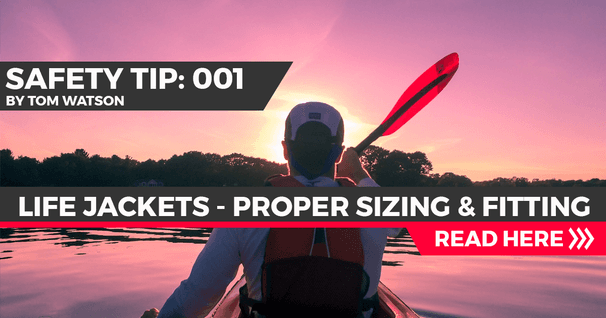The Basics to Getting Started Paddling
You've got your new boat. Now let's load it up and get out on the water.
Roof Racks & Tie Downs
A good roof rack or sport trailer and some cam straps are the best way to transport a kayak or canoe. Many cars with factory luggage racks may also work, but be sure to check on the maximum capacity rating in your owner's manual first. For ultimate security, it's always a good idea to use appropriate bow and stern tie downs secured to the bumper or frame of your car or trailer.
Never use shock cord or bungees to secure boats or gear on a rack. Padding on the bars or appropriate saddles or J-cradles help keep the hull from deforming, especially in warm climates. Racking the boat upside down also helps, especially with canoes. If your boat hangs over the rear of the car more than four feet, a red flag is required.
Carrying Your Boat
Now that you've arrived at your destination, you need to get the boat to the water. Tandem carries work best. The grab toggles at the ends of the boat make this a snap. Solo carries are a bit more challenging and take some practice. Balancing the boat is the key with any solo carry, and be sure to lift the boat with your legs, not your back.
Many people use accessory wheels that turn the boat into a trailer. Wheeling the boat to the water becomes fairly straightforward and puts the weight of the boat on the wheels, not your body. These wheels can break down and store in the boat while you're paddling, or they can go back in your car.
Pre-Launch
Before hitting the water, it's a good idea to adjust any foot braces or seat components that you need adjusted. You will want to stow any gear that you plan on taking with you. Remember to keep things you may need close at hand. Waterproof bags for cell phones or keys are a great thing to have on hand as well.
Launch Tips
Launching your boat from a variety of shoreline situations or docks can be challenging, but with a little practice it can be done in almost any waterside scenario.
To launch a sit-in kayak from a gradual sloping beach, put the boat in the water stern first and make sure the boat is floating. Then simply straddle the kayak, sit down, bring your legs in, placing your feet on the foot braces and your knees against the knee pads. Then, push off in reverse.
For a sit on top kayak, float the boat, wade out to one side of the boat, and simply sit down. Swing your legs on board and you're good to go.
For a canoe, it's sometimes easiest to position the boat sideways to the shoreline and get in one at a time. This can also work perpendicular to the shoreline, but make sure the water is deep enough.
When one end of the boat is stuck on high ground, the boat can be very tippy. From a dock or a rocky shoreline, you'll need to position any boat parallel to the dock or shoreline and then carefully climb on board while steadying the boat. Keep your center of gravity as low as possible.
Paddle Position
In any of these techniques, it's best to place your paddle in a position where you'll be able to get to it once you're settled into the boat. Using your paddle as a crutch or kickstand may damage or break your paddle.
When landing on shore, it's just the opposite of launching. Whichever technique you used getting into the boat will work in the reverse getting out. Wet feet are part of the game of boating.
Gear Placement in the Boat
Your boat was designed to work best when it's balanced, or the nautical term, "trimmed". Make sure it's trimmed forward to back and side to side. If you're carrying extra gear, or in the case of a tandem or canoe where two paddlers are involved, it's important to position the weight so it's evenly distributed.
A stern that is a little bit heavy is okay, but never have your bow heavy. This can make the boat hard to control, especially in the wind. With canoes, it's sometimes necessary to carry extra weight, like a large water jug, to help balance out paddlers when their size difference is great.
Safe & Smart
Now you're ready to enjoy your time on the water. And remember to always use good judgment and not be out in conditions that might capsize you. Knowing your local waterway and possible dangers that exist is key to good safety on the water.
Related Articles
Ever wonder what exactly the weight capacity of a board was for? Turns out it's for the performance of…
Adhering to the fundamental safety rule that a lifejacket should always be worn when out on the…
Learn the full glossary of canoe terminology in this excerpt from The Complete Book of Canoeing by I.…



